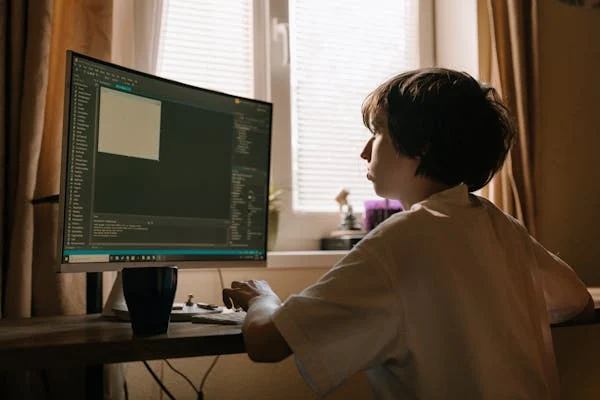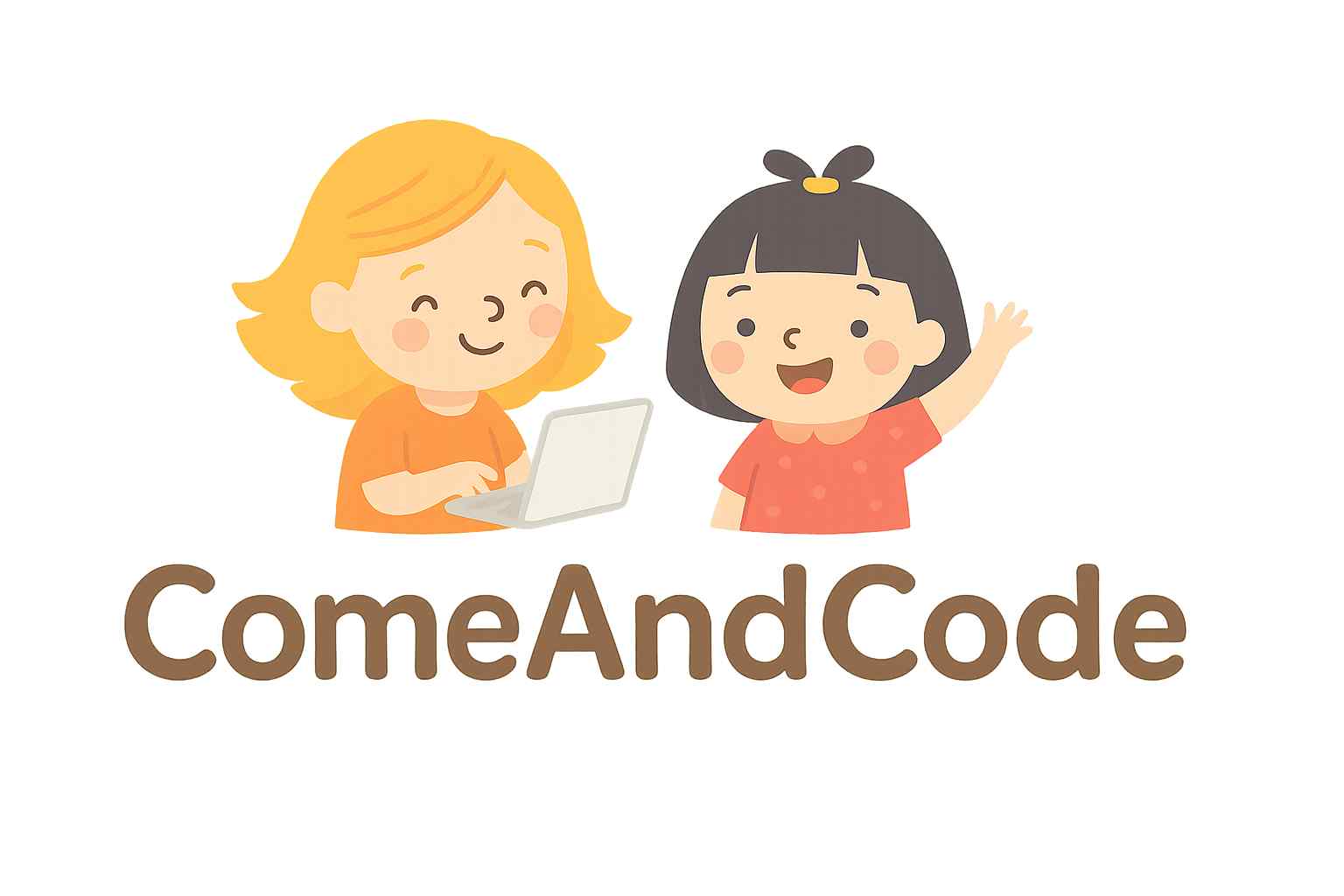Correct Age for Kids to Start Coding Classes is rapidly becoming an essential skill, and many parents are eager to introduce their children to programming from a young age. However, the question of when is the right time to start coding classes for kids can be nuanced. This article explores the ideal age to begin coding education, the benefits of early coding exposure, and practical advice for parents considering coding classes for their children.
1. Introduction to Coding for Kids

Coding, or programming, involves creating instructions that computers follow to perform specific tasks. As technology continues to evolve, coding has become a fundamental skill in various fields, from technology and engineering to finance and art. For children, learning to code can enhance problem-solving skills, logical thinking, and creativity.
2. Early Exposure to Coding: A Developmental Perspective
2.1 Cognitive Development and Learning Readiness
Children’s cognitive development plays a crucial role in determining the right age for coding classes. According to developmental psychology, younger children, particularly those under the age of 6, are in the early stages of cognitive and linguistic development. At this stage, they may not yet have the abstract thinking skills necessary for traditional coding.
2.2 Age-Appropriate Coding Concepts
- Ages 4-6: At this stage, children are more suited to basic computational thinking rather than actual coding. They can engage in activities that promote logical reasoning and problem-solving through games and simple puzzles.
- Ages 7-10: This age group begins to develop the cognitive abilities required for more structured learning. They can grasp fundamental programming concepts through visual block-based programming languages like Scratch, which introduce coding logic more tangibly.
- Ages 11-14: With more advanced cognitive skills, pre-teens can handle more complex coding languages and projects. They can explore text-based programming languages like Python or JavaScript, which allow for greater creativity and problem-solving.
- Ages 15 and up: Teenagers are typically ready for advanced coding concepts and can tackle complex projects, including app development, game design, and web development.
3. Benefits of Early Coding Education
3.1 Cognitive and Academic Growth
Learning to code can significantly enhance cognitive development. Early exposure to coding helps children develop critical thinking, logical reasoning, and problem-solving skills. Studies have shown that these skills translate into better performance in mathematics and science.
3.2 Creativity and Innovation
Coding encourages creativity by allowing children to build their projects, from simple games to interactive stories. It fosters innovation as kids experiment with different ideas and solutions, learning to think outside the box.
3.3 Future Career Opportunities
Introducing coding at a young age can pave the way for future career opportunities in technology and related fields. As technology becomes increasingly integrated into various industries, early coding skills can give children a competitive edge.
3.4 Improved Resilience and Perseverance
Coding involves trial and error. Children learn to debug their code, which teaches them resilience and perseverance. These qualities are essential for overcoming challenges in both academic and personal life.
4. Age-Appropriate Coding Platforms and Tools
4.1 Coding for Ages 4-6
- Tynker Junior: An introductory coding platform designed for young children with interactive games and puzzles that teach basic programming concepts.
- Code.org’s Pre-reader Express: Offers simple, visually engaging activities that introduce young children to the concepts of algorithms and sequencing.
4.2 Coding for Ages 7-10
- Scratch: A block-based programming language that allows children to create interactive stories, games, and animations. It provides a visual and intuitive way to learn coding.
- Kodable: Focuses on teaching basic programming concepts through games and activities tailored to young learners.
4.3 Coding for Ages 11-14
- Python: A versatile, beginner-friendly programming language that is widely used in the industry. Platforms like CodeCombat and Repl.it offer interactive Python coding experiences for kids.
- Roblox Studio: Allows kids to create their games using Lua scripting, fostering creativity and practical coding experience.
4.4 Coding for Ages 15 and Up
- JavaScript: A powerful scripting language used in web development. Platforms like Khan Academy and Codecademy offer advanced courses for teenagers.
- App Development Platforms: Tools like Swift Playgrounds and Android Studio help teenagers develop real-world applications and games.
5. Practical Considerations for Parents
5.1 Assessing Your Child’s Interest and Readiness
Before enrolling your child in coding classes, consider their interest and readiness. Look for signs of curiosity about technology and problem-solving. It’s also important to choose classes that match their cognitive and emotional development.
5.2 Finding the Right Coding Class
- Instructor Experience: Look for classes taught by experienced instructors who can engage and motivate children.
- Class Size: Smaller class sizes ensure more personalized attention and a better learning experience.
- Curriculum: Ensure that the curriculum is age-appropriate and focuses on fundamental coding concepts without being overwhelming.
5.3 Balancing Screen Time
While coding can be a valuable educational activity, it’s important to balance screen time with other activities. Encourage your child to engage in physical play, social interactions, and other hobbies to maintain a well-rounded lifestyle.
5.4 Encouraging a Growth Mindset
Foster a growth mindset by emphasizing the importance of effort and persistence over innate ability. Encourage your child to view challenges and mistakes as opportunities to learn and grow.
6. Common Misconceptions About Early Coding Education
6.1 Coding is Too Advanced for Young Children
While young children may not be ready for complex programming languages, they can still engage in age-appropriate activities that build foundational skills. Simplified coding tools and games make it possible for children as young as 4-6 to start learning basic concepts.
6.2 Coding Will Overwhelm Children
Coding can be introduced gradually and in a fun, engaging manner. The key is to match the learning activities with the child’s developmental stage and interests, ensuring they are challenged but not overwhelmed.
6.3 Coding is Only for Future Programmers
Coding education is beneficial even if a child does not pursue a career in programming. The skills gained through coding, such as problem-solving, logical thinking, and creativity, are valuable in many areas of life.
7. The Future of Coding Education

7.1 Evolving Technology and Curriculum
As technology advances, coding education will continue to evolve. New tools and platforms will emerge, offering more interactive and engaging ways for children to learn programming.
7.2 Expanding Accessibility
Efforts are being made to make coding education more accessible to children from diverse backgrounds. Initiatives like free online resources, community programs, and educational partnerships aim to provide opportunities for all children to learn coding.
Conclusion
Determining the correct age for kids to start coding classes involves considering their cognitive development, interest, and readiness. Early exposure to coding can offer numerous benefits, from cognitive and academic growth to enhanced creativity and future career opportunities. By choosing age-appropriate tools and fostering a supportive learning environment, parents can help their children develop valuable skills that will serve them well throughout their lives. As technology continues to shape our world, empowering children with coding skills can open doors to endless possibilities.
